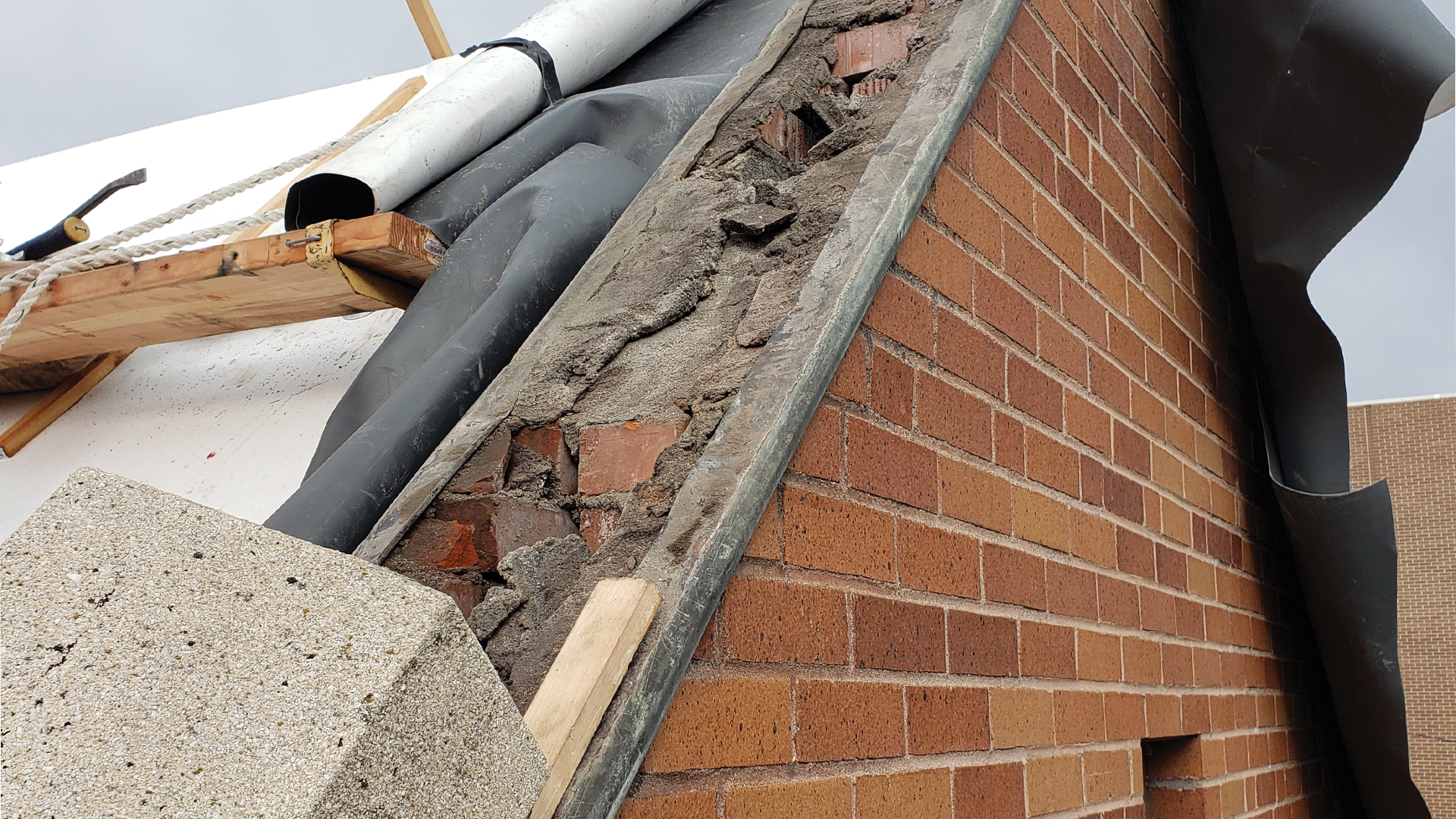
Assessing damage to the roofing system of your historic building in the wake of winter weather or storms is important to ensuring the structural integrity of your property. However, identifying potential winter weather damage to the masonry work of your historic building is just as important, especially given how connected chimneys are to the roof and other components of your structure.
While winter weather damage to historic roofing elements like clay or slate tiles are more visually apparent in the form of chips, cracks, or breaks, pinpointing damage or deterioration to historic masonry work can be a little more subtle and tricky. This doesn’t mean damage can be any less costly or impactful to the appearance and stability of your historic property.
With this in mind, let’s look at a couple of ways to tell if your historic masonry has been damaged by winter weather, and why catching masonry damage early is important to avoiding costly, large-scale restorations down the road.
bowed or bulging bricks
Bowed or bulging bricks occur when the mortar between bricks that is used to help structure walls or exterior facades hardens and cracks over time. Not only does this allow for the ingress of moisture in the form of snow and ice, it also makes your historic masonry more susceptible to the force of gravity. This can cause bricks to bow and create unsightly bulges that are also detrimental to the overall structural integrity of the brick.
Bowed and bulging bricks from winter weather damage are not just limited to exterior walls or decorative adornments. Chimney crowns can also demonstrate bowed or bulging bricks, and, over time, this kind of damage can spread to affect other components of your roof system.
For example, this historic courthouse in Green County, Wisconsin, about an hour from Rockford, Illinois, required historic masonry work to restore the visual appearance of the property, but also to ensure damage to the chimney saddle did not lead to additional damage or deterioration.
mortar deterioration in the form of cracking, crumbling, or eroding
Mortar does wear over time, but excessive or rapid mortar deterioration or flaking can be a sign of winter weather damage. This occurs as the result of continued or high levels of moisture accumulation, and it often manifests in mortar flaking or eroding from between each brick. Prolonged exposure to severe cold, snow, ice, or frost can also cause mortar joints to actually crack and crumble.
Another sign of mortar deterioration is mortar efflorescence, a condition that produces deposits of white powder on the surface of your historic restoration. Mortar efflorescence is caused by moisture evaporation from hot air inside your masonry walls mixing with the cold and wet winter air from the outside. Mortar efflorescence is particularly common around chimneys or other ventilation cavities.
Mortar deterioration is especially concerning in pointing brick, and identifying any weather-related damage to pointing brick is key in preventing damage to associated components of your property, including historic carpentry or historic roofing.
Spalling brickwork
A general term for cracking, peeling, chipping, or erosion of the front of individual bricks, spalling is caused by the prolonged presence of moisture. Water is absorbed into bricks, and, during periods of cold weather, the moisture freezes and expands, thus causing bricks to crack and/or erode. Spalling bricks can be replaced, but once spalling has occurred, it’s key to identify the source of the moisture accumulation to stop the spread of spalling throughout an exterior wall or chimney.
A Renaissance Magellan Building Assessment (MBA) can help determine if and where spalling has occurred, and a MBA can help our historic masonry specialists chart a course of restoration work to address the issue and help restore your property before subsequent damage takes place.
Missing or damaged chimney caps
While it may sound odd, missing or damaged chimney caps can be a surefire way to assess whether your historic masonry has been unnecessarily subjected to harsh winter weather conditions. Chimney caps help protect the interior of your chimney system and your chimney flue from moisture accumulation. Not only can a missing or damaged chimney cap result in chimney leaks, it can also cause spalling, mortar deterioration, and bowed or bulging bricks around your chimney.
Whether your property has a single or multi-flue chimney can add an additional layer of complexity to the restoration or replacement of chimney caps. This historic residential property about 90 minutes from Rockford, Illinois required chimney and masonry restoration work, and our expert craftspeople combined a high-level of skill, technology, and historic materials to restore this home to its original glory.
As winter draws to a close, evaluating your historic property for signs of masonry damage or deterioration can help you take a proactive approach to maintaining your structure. Our team of restoration technicians can help you understand if your property has sustained masonry damage, and the appropriate steps to ensure a high-quality restoration.
Contact us to schedule an inspection of your history property.
